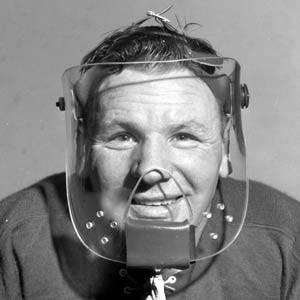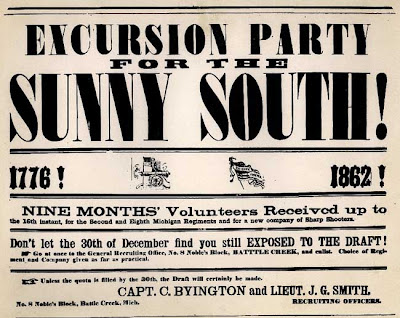
Hockey masks weren’t always the high-tech airbrushed affairs they are today. In fact there was a time when goaltenders didn’t even wear them.
A
LIFE photo gallery of NHL goalie masks includes Gerry Cheevers' famous mask, above. It is covered with drawn-on stitches indicating where he had been smacked in the face by pucks.
Below are a few of the contemporary masks with impressively airbrushed graphics.

Far more interesting, in terms of actual design though, are the iterations of protective wear that resulted in the helmet/cage masks worn today.
The 1966 Life magazine photo, below, commemorates the maskless years of hockey played by Terry Sawchuk. His scars from actual injuries were augmented by a make-up artist for the photo.

Baseball catchers have been wearing cage masks since the late 1800s. With the advent of the curve ball in the mid-1870s, followed by the elimination of the one-bounce rule soon after, masks became the norm.
(more here)Hockey, on the other hand, for many years was played with a puck that generally, believe it or not, stayed on the ice. Who needed a mask? But play became more aggressive, the puck became airborne, and goaltending became a seriously dangerous profession. Even so, the introduction of the mask for actual game play was resisted due to the restrictions on movement and vision they caused. It is now considered the single piece of equipment that has most drastically changed the way the game is played.
(more here)The earliest masks in the
Hockey Hall of Fame gallery, date from the late 1920s. The first two recorded instances of face protection on ice were a catcher’s mask, and a fencing mask. Here are a few of the early masks designed specifically for hockey.
 1930:
1930: The first mask seen in the NHL was worn to protect the injured face of Montreal Maroons goaltender Clint Benedict. Since it restricted his vision, he stopped wearing it as soon as his broken nose and cheekbone healed.
 1936:
1936: Japanese goaltender Teiji Honma wore a modified cage at the Winter Olympics in Germany to protect his eyeglasses.
 1954:
1954: A precursor to visors seen in the NHL, was this clear plastic, full-face shield. It was never worn in a game due to problems with fogging, glare and heat.

 November 1959:
November 1959: Jacques Plante is stitched up for a severe injury while playing the Rangers in Madison Square Garden. He returns to the ice under one condition--that he be allowed to wear a mask which he had started using during practice. History is made as he becomes the first NHL goalie to wear a mask during an actual game.

The designer of the famous Hannibal-Lecter-meets-Sleeper mask, was Bill Burchmore, a promotional salesman for Fiberglass Canada Ltd. Burchmore, had witnessed a Plante injury in April 1958 which had halted game play for 45 minutes. The next day, while observing a mannequin at the office, Burchmore had his revelation. Fiberglass could offer the facial protection along with the visibility and movement that no other material was capable of providing. He convinced Plante to collaborate in the development, which began with a facial mold by a plastic surgeon.
Much has been written about this, especially since 2009 marked the 50th anniversary of the historic mask debut.
This site has the story in extensive (and much appreciated) detail, and also offers newspaper accounts of the event.
Below are items from an auction of Burchmore’s archive, including a face mold, patent, and the “pretzel” mask.

Just a few more images from the
NHL site where you can see many, many more.

It wasn’t until almost a century after the first baseball catcher’s mask debuted, in 1877, that ice hockey fully embraced face protection. In 1974, Andy Brown, of the Pittsburgh Penguins, was the last maskless goaltender to appear in an NHL game.








































































